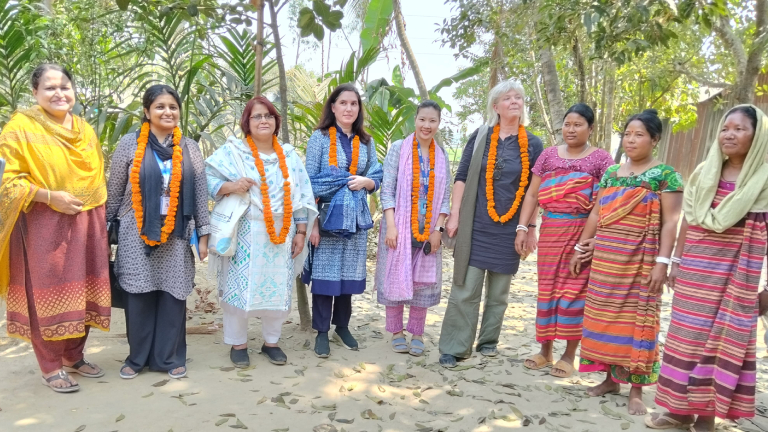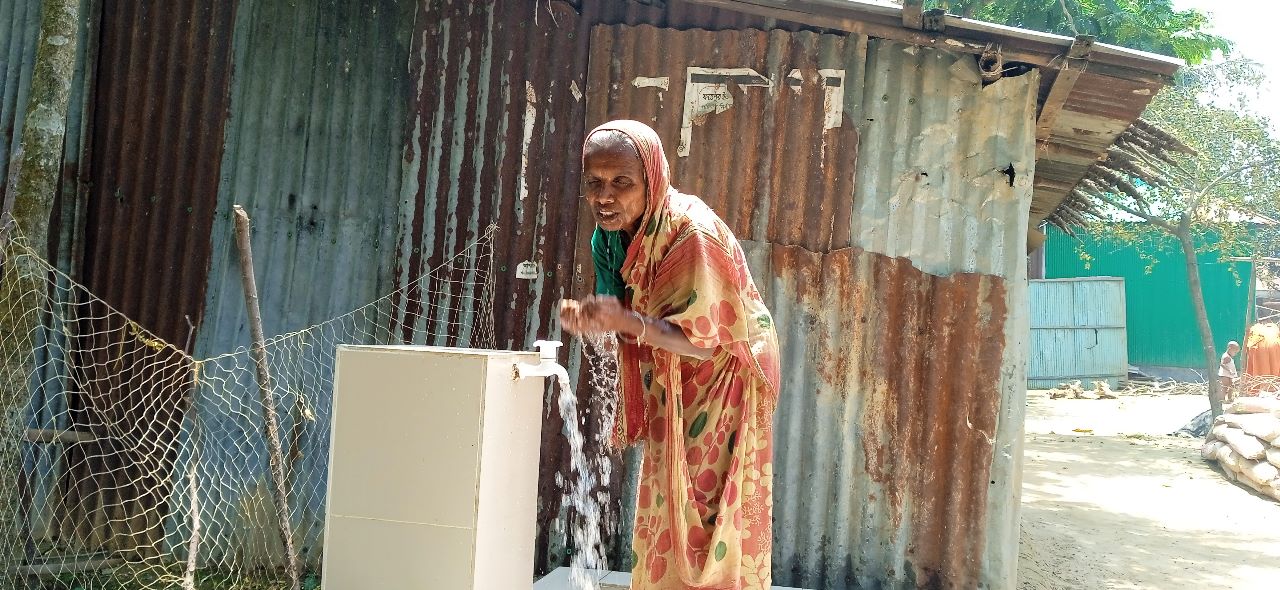Sunamganj district, located in the northeastern Haor region (wetlands) of Bangladesh, faces severe water and sanitation challenges due to its unique geography and socio-economic conditions. The district, characterized by wetlands and frequent seasonal floods, struggles with access to safe drinking water and proper sanitation, especially during the monsoon season. Arsenic contamination and poor management of surface water further diminish the availability of potable water. Many rural and remote communities depend on unsafe water sources, resulting in widespread waterborne diseases such as diarrhea and cholera. Sanitation infrastructure is also inadequate, with a large portion of the population lacking access to hygienic latrines, and open defecation contributing to environmental pollution and health risks. Inadequate waste management exacerbates these issues. Although efforts by the government and NGOs to install tube wells and latrines have made some progress, challenges remain due to the district’s isolation, frequent flooding, and poverty. Addressing these issues requires sustainable solutions that consider the district’s ecological and social dynamics, focusing on resilient infrastructure and community-driven hygiene education to improve public health.
In 2022, Sunamganj experienced a devastating flood that severely damaged water and sanitation infrastructure. As per the Department of Public Health Engineering (DPHE), 370 tubewell[1] and 3,659 toilets were affected. Prolonged flooding contaminated drinking water sources, including tube wells and ponds, with floodwater and debris. Arsenic contamination and polluted surface water became major concerns, leaving thousands without access to clean water. The floods also destroyed sanitation facilities, such as latrines, leading to widespread open defecation, further polluting water bodies and increasing public health risks. The situation caused a surge in waterborne diseases like diarrhea, cholera, and skin infections, disproportionately affecting children and vulnerable populations. Many households lost access to functioning sanitation systems, and efforts to restore clean water and sanitation services were hindered by persistent flooding. This highlighted the urgent need for resilient water and sanitation solutions in Sunamganj’s flood-prone areas.
The Haor region, including Sunamganj, is highly vulnerable to seasonal floods, which disrupt access to water, sanitation, and hygiene (WASH) services. Flooding often contaminates water sources and destroys sanitation infrastructure, leading to increased waterborne diseases and impacting the health and livelihoods of communities. The “Resilient WASH Solution for Flood-Affected People of Haor Areas in Bangladesh” project aims to address these challenges by providing flood-resistant WASH infrastructure that ensures access to safe water and sanitation during the monsoon season. Given the region’s isolation and poverty, many households rely on contaminated surface water, and the lack of proper sanitation facilities worsens public health risks. This project will implement sustainable technologies like elevated green energy operated water networking system, flood-resistant networking toilets and floating toilets, and improved waste management systems. It will also engage communities in hygiene promotion to drive behavioral change, ensuring lasting impact. By addressing the critical needs of flood-affected communities, the project will enhance public health, reduce environmental pollution, and promote long-term resilience in the Haor region.


